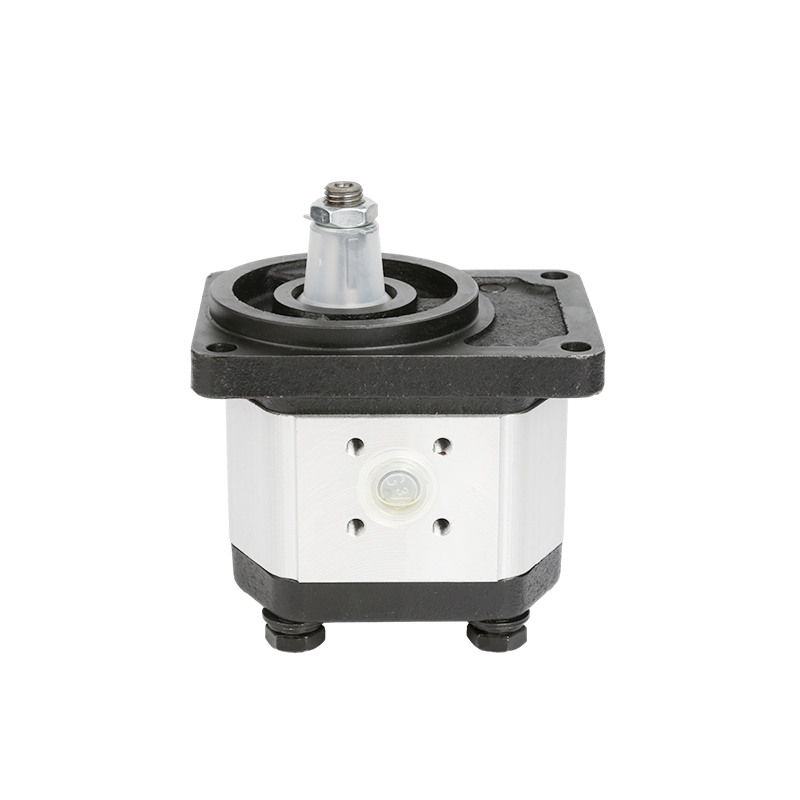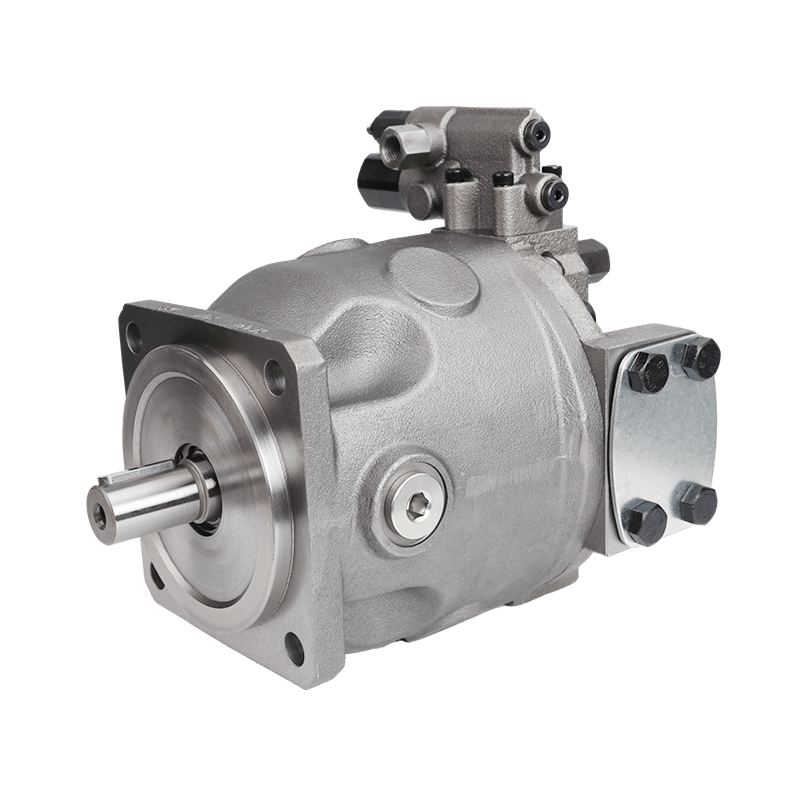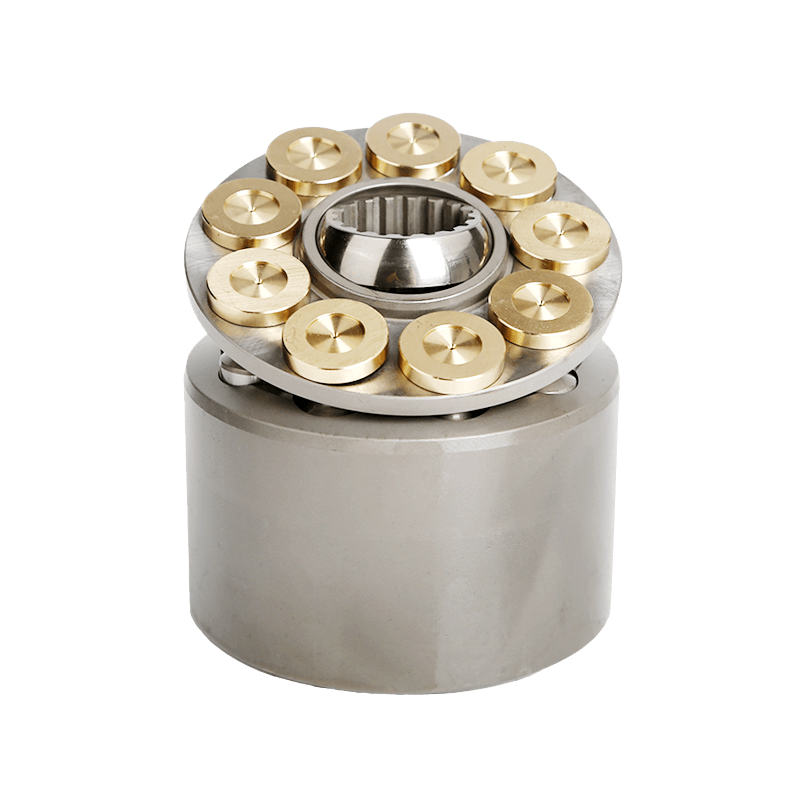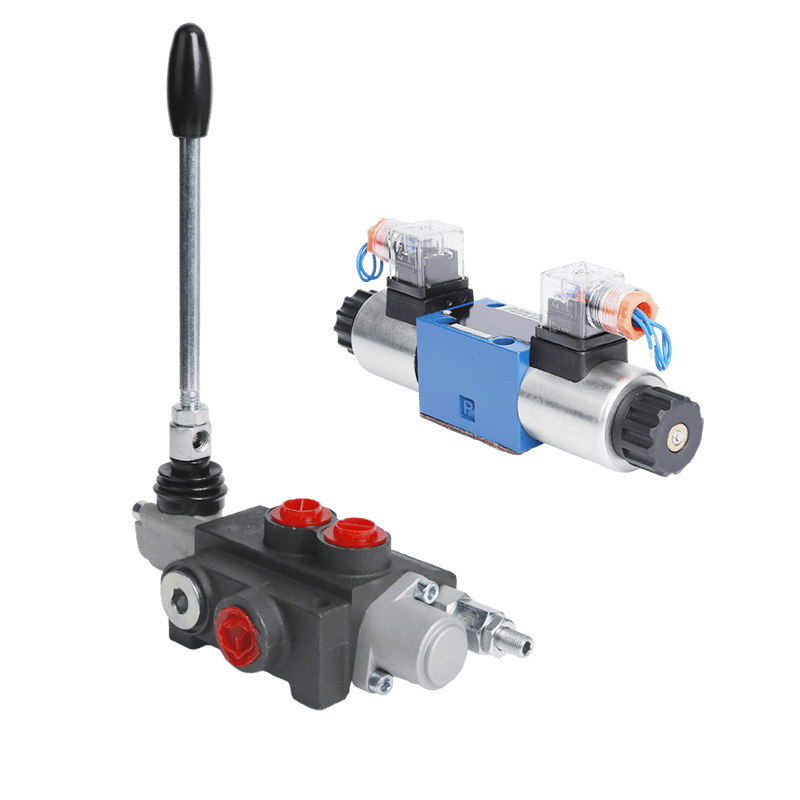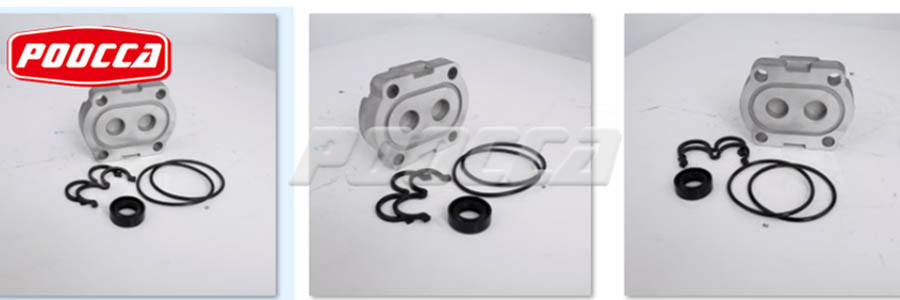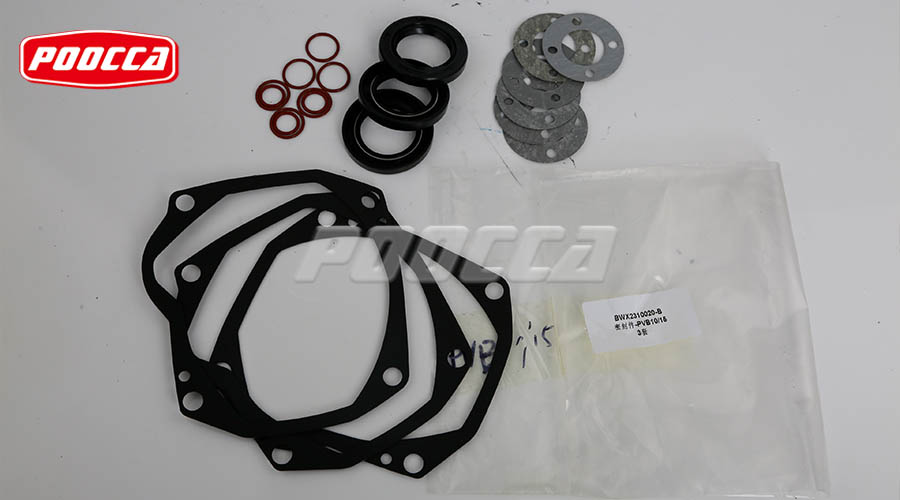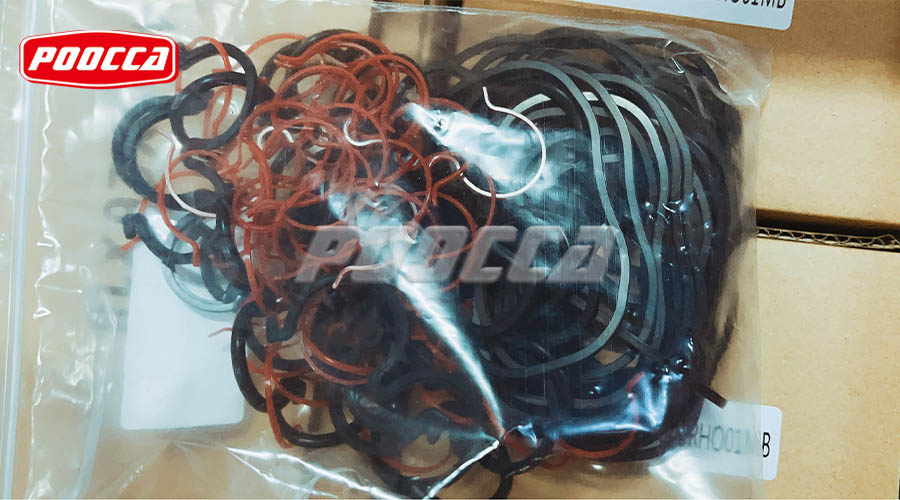Definition and Purpose
Hydraulic seals are indispensable elements within mechanical systems, meticulously crafted to avert fluid leakage, sustain pressure levels, and facilitate the seamless operation of hydraulic machinery. Their pivotal role encompasses preventing contaminant infiltration and hydraulic fluid escape, thereby preserving system integrity. These seals are commonly fabricated from robust materials such as rubber, plastic, and elastomers—selected for their durability and compatibility with hydraulic fluids. By establishing a pressure-tight seal, hydraulic seals enable efficient system functionality while minimizing downtime and maintenance demands.
Types of Hydraulic Seals
Understanding the different types of hydraulic seals is crucial for their successful application and maintenance. The two primary categories are static seals and dynamic seals.
Static Seals
Static seals are used in applications where there is no relative movement between the sealing surfaces. These seals are commonly found in areas where components are bolted, threaded, or otherwise fixed in position. Examples include O-rings, gaskets, and back-up rings. The main purpose of static seals is to provide a robust barrier against fluid leakage, ensuring that sealed joints remain impermeable under various pressures and temperatures. Proper material selection is vital to withstand the mechanical stress and chemical exposure typical in hydraulic applications.
Dynamic Seals
Dynamic seals, on the other hand, are designed to operate in environments where there is relative motion between surfaces. These seals are used in applications involving hydraulic cylinders, pistons, and rods. Their role is to prevent fluid leakage while accommodating the movement that occurs during operation. Dynamic seals come in various forms, such as rod seals, piston seals, and wipers. The choice of material and design for dynamic seals must account for the specific motion, pressure, and temperature conditions to ensure long-lasting performance without compromising the efficiency of the hydraulic system.
Key Applications
Hydraulic seals find applications across a wide range of industries due to their versatility and essential role in maintaining system performance. In the construction industry, hydraulic seals are integral to the functioning of heavy machinery such as excavators, bulldozers, and cranes. In industrial manufacturing, these seals are vital for the operation of hydraulic presses, injection molding machines, and other equipment that relies on hydraulic power. Additionally, the automotive industry uses hydraulic seals in systems like brakes, power steering, and suspension. Their ability to function effectively in diverse environments underscores the critical importance of hydraulic seals in maintaining the reliability and efficiency of mechanical systems.
POOCCA Hydraulic (Shenzhen) Co., Ltd. was established in 1997 and has four companies in Hong Kong, Guangdong, Jiangsu and Zhejiang. We are a comprehensive hydraulic service company specializing in the research and development, manufacturing, maintenance and sales of hydraulic pumps, motors, valves and related parts. With extensive experience in providing power transmission and drive solutions to hydraulic system users around the world, we have a strong reputation in the industry.
The Importance of Hydraulic Seals in Mechanical Systems
Ensuring System Integrity
Hydraulic seals are fundamental in ensuring system integrity by maintaining fluid containment and preventing contaminants from entering the system. This containment is crucial for the operation of hydraulic systems, as even a small leak can lead to significant performance issues and system failure. By providing a reliable barrier, hydraulic seals help maintain the pressure levels required for system operation, ensuring that mechanical parts are lubricated and cooled properly. This, in turn, reduces wear and tear on components and prolongs their lifespan.
Preventing Leakages
One of the primary functions of hydraulic seals is to prevent leakages of hydraulic fluid. Leakage can lead to a drop in system pressure, resulting in reduced efficiency and potential complete system failure. Hydraulic seals are designed to withstand high pressures and temperature variations to ensure that fluids are contained within the system. Effective sealing minimizes the risk of hydraulic fluid loss, which not only helps in maintaining system performance but also reduces the environmental impact by preventing hazardous spills.
Enhancing Efficiency
Hydraulic seals play a pivotal role in enhancing the overall efficiency of mechanical systems. By maintaining the proper seal, these components ensure that the energy used to pressurize the fluid is not wasted through leaks or inefficiencies. This results in more effective use of power, leading to better performance of hydraulic machinery. Additionally, well-maintained seals reduce the need for frequent repairs and maintenance, thus saving time and operational costs. The efficiency gained through reliable hydraulic seals translates into more productive operations and lower total cost of ownership for mechanical systems.
Different Materials Used for Hydraulic Seals
Rubber-Based Materials
Rubber-based materials are commonly used in the manufacture of hydraulic seals due to their excellent flexibility, resilience, and compatibility with various hydraulic fluids.
Nitrile (NBR)
Nitrile rubber, also known as NBR, is one of the most commonly used materials for hydraulic seals. It offers excellent resistance to petroleum-based oils and hydraulic fluids. NBR seals are known for their durability and ability to maintain flexibility over a wide range of temperatures, making them suitable for a variety of applications. However, they are not suitable for use with certain chemicals, such as ketones and ozone.
Fluoroelastomer (FKM)
Fluoroelastomer, or FKM, is another popular material for hydraulic seals, particularly in high-temperature applications. FKM seals provide superior resistance to heat, chemicals, and weathering compared to NBR. This makes them ideal for use in aggressive environments where exposure to harsh chemicals and high temperatures is common. Despite their higher cost, FKM seals are often chosen for their long-lasting performance and reliability.
Plastic-Based Materials
Plastic-based materials are also used extensively in hydraulic seals due to their strength, low friction properties, and chemical resistance.
Polytetrafluoroethylene (PTFE)
Polytetrafluoroethylene, more commonly known as PTFE, is a highly versatile material used for hydraulic seals. PTFE seals are known for their exceptional chemical resistance and low friction, making them suitable for a wide range of applications. They can operate at extreme temperatures and provide excellent sealing performance. However, PTFE lacks the elasticity of rubber-based materials, which can limit its use in certain dynamic applications.
Polyurethane (PU)
Polyurethane seals are widely used in hydraulic applications due to their excellent mechanical properties, including high abrasion resistance, strength, and flexibility. PU seals perform well in both high-pressure and low-temperature environments. Their durability and resistance to wear make them an excellent choice for applications involving dynamic motion and heavy loads.
Designing Hydraulic Seals for Optimal Performance
Factors to Consider
Designing hydraulic seals for optimal performance involves considering several critical factors that can affect their functionality and longevity.
Pressure Ratings
One of the key factors in designing hydraulic seals is the pressure rating of the system. The seals must be capable of withstanding the maximum operating pressure without deforming or failing. This requires selecting materials and designs that can handle the specific pressure conditions of the application.
Temperature Ranges
Temperature ranges are another crucial consideration. Hydraulic seals must function effectively across the operating temperature spectrum of the system. This includes both the minimum and maximum temperatures, which can vary significantly depending on the application. The chosen material must retain its sealing properties under these temperature variations.
Custom vs. Standard Seals
When designing hydraulic seals, it’s essential to choose between custom and standard seal options.
Custom seals are tailored to meet the specific requirements of the application. This can include unique sizes, shapes, and materials designed to optimize performance for particular system conditions. Custom seals are often used in specialized or high-demand environments where standard seals may not provide adequate performance.
Standard seals, on the other hand, are pre-manufactured to standard sizes and specifications. They are readily available and typically cost less than custom seals. Standard seals are suitable for many common applications and can provide reliable performance if selected appropriately for the system’s operating conditions.
Installation and Maintenance of Hydraulic Seals
Proper Installation Techniques
Ensuring the correct installation of hydraulic seals is vital for their performance and longevity. Improper installation can lead to seal damage, leaks, and system failure. It is essential to follow manufacturer guidelines and use the appropriate tools during the installation process. Ensuring a clean and smooth sealing surface, applying the right amount of lubrication, and avoiding excessive force are critical steps in proper seal installation.
Routine Inspection and Replacement Guidelines
Routine inspection of hydraulic seals is crucial in maintaining their functionality and preventing unexpected failures. Regular checks for signs of wear, deformation, or leakage can help identify potential issues early. Seals showing any signs of damage should be replaced promptly to avoid compromising the system’s performance. Following a scheduled maintenance plan can also help in extending the life of hydraulic seals and ensuring system reliability.
Challenges and Solutions in Using Hydraulic Seals
Common Issues
Several common issues can arise when using hydraulic seals, impacting their performance and longevity.
Wear and Tear
Wear and tear is a significant issue, especially in dynamic applications. Continuous movement can cause seals to degrade over time, leading to leakage and reduced efficiency. Selecting materials designed for high wear resistance and ensuring proper lubrication can help mitigate this problem.
Chemical Compatibility
Chemical compatibility is another critical issue. Hydraulic seals must be compatible with the fluids and environmental conditions they will encounter. Using materials that can resist chemical attack and selecting seals designed for the specific fluid types can prevent premature seal failure.
Troubleshooting Tips
Effective troubleshooting can extend the life of hydraulic seals and improve system performance. Regular monitoring of system pressure, temperature, and fluid levels can provide early indications of potential seal issues. Ensuring that seals are installed correctly and operating within their specified limits can prevent many common problems. Consulting with seal manufacturers for advice on material selection and design can also help address specific challenges.
Emerging Trends in Hydraulic Seal Technology
Advances in Material Science
Emerging trends in hydraulic seal technology are shaping the future of mechanical systems. Advances in material science are leading to the development of new, high-performance sealing materials. These materials offer better resistance to wear, chemicals, and extreme temperatures, providing enhanced longevity and reliability.
Innovations in Seal Design
Innovations in seal design are also contributing to improved performance. Enhanced geometries and seal profiles are being developed to provide better sealing performance under a wide range of operating conditions. These innovations are helping to extend the life of hydraulic seals and improve the overall efficiency of mechanical systems.
Summary: The Role of Hydraulic Seals in Modern Engineering
Hydraulic seals play an indispensable role in modern engineering by ensuring the efficient and reliable operation of hydraulic systems. Their ability to prevent leakage, maintain pressure, and protect against contaminants is critical in various applications, from construction and manufacturing to automotive systems. Advances in material science and seal design are continually improving their performance, making hydraulic seals a cornerstone of mechanical system integrity and efficiency. Ensuring proper selection, installation, and maintenance of hydraulic seals is vital for maximizing their lifespan and the overall effectiveness of the machinery they support.
At POOCCA, our strength is our dedicated team of over 300 professionals. Within this highly skilled workforce, we have a dynamic team of 70 sales professionals who possess vast experience and in-depth knowledge of our industry. Their expertise is crucial in providing tailor-made solutions and exceptional services to our valued clients.

